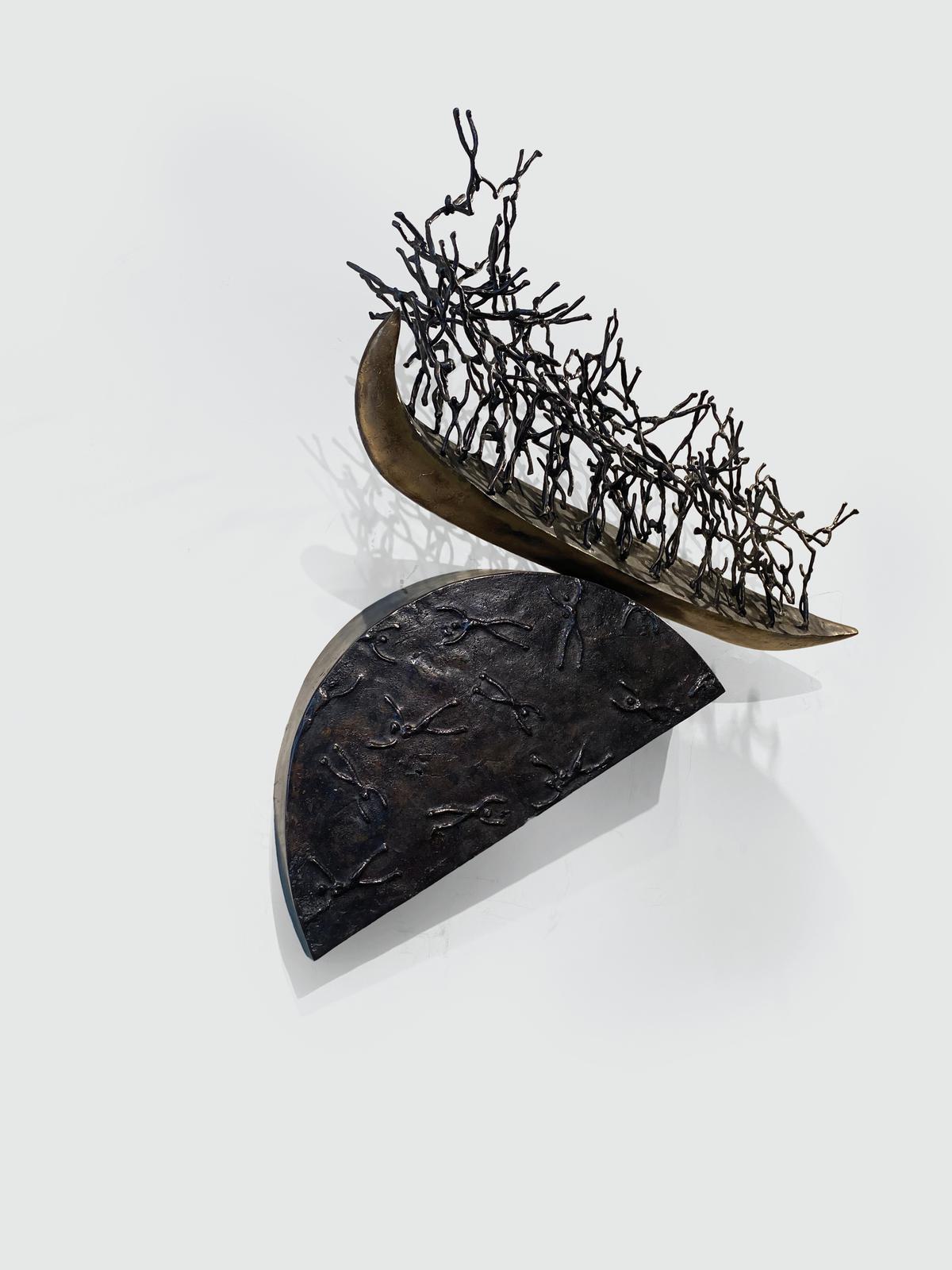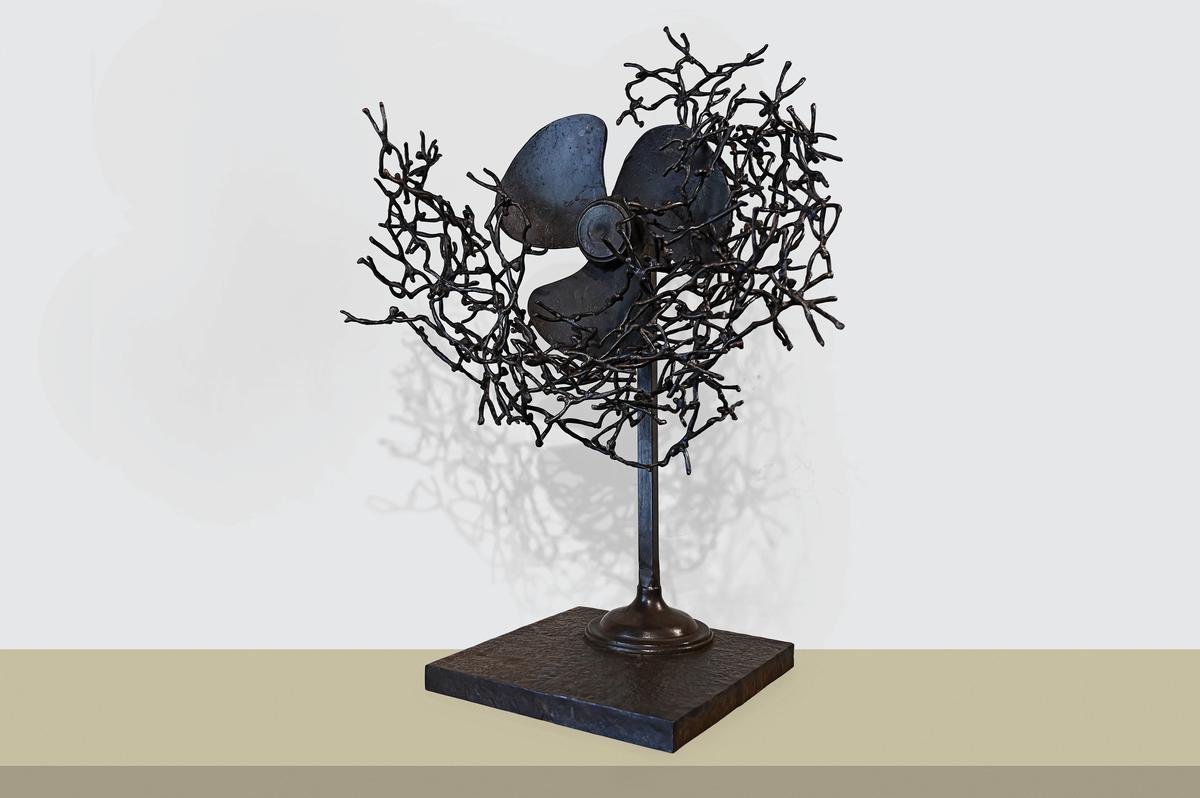Sculpting Lives: An art exhibition in Delhi showcasing a journey through five decades of excellence

K.S. Radhakrishnan’s The Crowd
| Photo Credit: Special Arrangement
As you step into Bikaner House in New Delhi, the first thing that captures your attention is a mesmerizing collection of 50 six-feet-tall sculptures, strategically placed as if casually strolling through a garden. These captivating sculptures serve as the prelude to the retrospective exhibition, “On The Open Road,” presented by Gallerie Nvyā. The exhibition is a retrospective celebration of sculptor K.S. Radhakrishnan’s work of five decades and showcases the evolution of his artistic prowess.
One of his recent creations, The Crowd, stands out at the exhibition. This monumental work captures the essence of people coming together. Each figure weighs almost 200 kilos. Radhakrishnan says it took him six years to complete the masterpiece. The sculptures depict individuals ascending a ramp, their faces reflecting joy, and bodies radiating alertness. It is a poignant representation of the amalgamation of diverse individualities converging into a harmonious gathering.
Talking about his artistic process, Radhakrishnan says, “I start working with the clay”. The intricate journey from clay modelling to Plaster of Paris casting to making a wax mould, and eventually transforming the structure into bronze, highlights the meticulous craftsmanship that defines his creations.

K.S. Radhakrishnan’s Boat on the Wave
| Photo Credit:
Special Arrangement
Human figures, in all their diversity, are a recurring motif in Radhakrishnan’s body of work. From clouds to waves, these sculptures take any and every form. When questioned about the prominence of human figures in his works, Radhakrishnan says, “When I started working in the 1970s, most of my works had a reference to the human figure. It was not obvious, but it was there. It was just never seen directly. After a while, the focus shifted from human to objects. That is when I thought of bringing the human back. I am unable to figure out the reason to bring it back,” he laughs.
Radhakrishnan’s experiences in Delhi’s Chhatarpur, where he witnessed migrants striving to establish their identities, led to the genesis of human figures. “They could be anything – a wave, a cloud, air, etc.,” he shares, shedding light on the inspiration behind his unique approach.
The exhibition, spanning two floors, offers a chronological journey through Radhakrishnan’s artistic evolution. From Showcasing his initial works in the 1970s to his most recent creations, the exhibition is a testament to the artist’s unwavering commitment

K.S. Radhakrishnan’s Fanfare
| Photo Credit:
Special Arrangement
Sculpting, says Radhakrishnan, was not his initial calling. A serendipitous moment at Shantiniketan, where he joined two spheres to create a torso, led to one of his earliest works, “Mother Torso,” from 1975.
A notable aspect of Radhakrishnan’s human figures is the presence of two avatars – Musui and Maiya. Musui, a young Santhal boy who occasionally modelled for Radhakrishnan during his student days at Shantiniketan, and Maiya, created from Musui’s rib, like God because he knew that without both man and woman the world cannot be mapped, the earth and the sky cannot be measured.
(At Bikaner House (near India Gate); Till December 14; 11am to 7pm)
For all the latest Entertainment News Click Here
For the latest news and updates, follow us on Google News.
